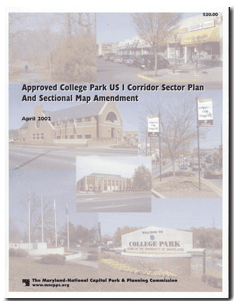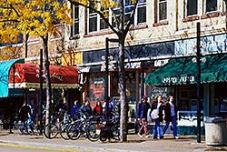 Fun new meetings on our Events page, most immediately a July 8 gathering on the Rt. 1 Plan. Rethink College Park provide a nice bit of data-driven context for this plan by tallying all the residential units and commercial square footage in the development pipeline at the moment. A recent note from Chad Williams at M-NCPPC updated citizens on the Route 1 Sector Plan. In case you did not receive it…
Fun new meetings on our Events page, most immediately a July 8 gathering on the Rt. 1 Plan. Rethink College Park provide a nice bit of data-driven context for this plan by tallying all the residential units and commercial square footage in the development pipeline at the moment. A recent note from Chad Williams at M-NCPPC updated citizens on the Route 1 Sector Plan. In case you did not receive it…
“I just wanted to let you know that due to circumstances beyond our control we will be unable to make our target date of tomorrow afternoon for distribution of copies of the Preliminary Central US 1 Corridor Sector Plan and Proposed Sectional Map Amendment document.
However, I do want to reassure you that you will still have plenty of time to read and review this document prior to the Joint Public Hearing that is scheduled for 7:00 p.m. on Tuesday, September 15, 2009 in the County Administration Building in Upper Marlboro. The legally mandated timeframe for review of preliminary plans is 30 days, which would mean copies must be available no later than August 15. We will continue to make every effort to provide copies as early in July as feasible to provide extra time for your review and to prepare comments on the plan for the public hearing record.
In the meantime, the meeting that has been scheduled for 7:00 p.m. on Wednesday, July 8 at the Gildenhorn Recital Hall in the Clarice Smith Center will still occur. The purpose of this meeting is to present an overview of the recommendations of the preliminary sector plan to provide some background as you begin your reading and review.
I will send another message to this group once copies are available for pick-up and online.”
Green Infrastructure Plan Legislation In 2005, the County Council approved the first-ever Green Infrastructure Plan for the county. The legislation to implement the plan has recently been transmitted to the County Council for review. Details on the plan and legislation can be found at Environmental Projects.
Review of County Zoning Ordinance and Subdivision Regulations The Planning Department has recently hired a consultant to propose amendments to the county’s existing regulations to better implement the General Plan. More details on this new project can be found at Development Review.
Envision Prince George’s Lives And you thought all that visioning stuff might have died a quiet death. “The Prince George’s County Planning Department is pleased to announce the selection of AmericaSpeaks—a nationally recognized nonprofit organization specializing in public engagement on community and policy issues to support Envision Prince George’s! We are excited that the organization pioneered concepts in community engagement and has an exemplary record of doing so with both the strategic expertise and the energy that is needed to make this initiative a success and sustain our efforts.”
A new ![]() newsletter includes the dates of community planning events and updates from the Department and information on upcoming Envision workshops and events…eventually they will think to put these on the event calendar.
newsletter includes the dates of community planning events and updates from the Department and information on upcoming Envision workshops and events…eventually they will think to put these on the event calendar.




 Wednesday, November 28
Wednesday, November 28



